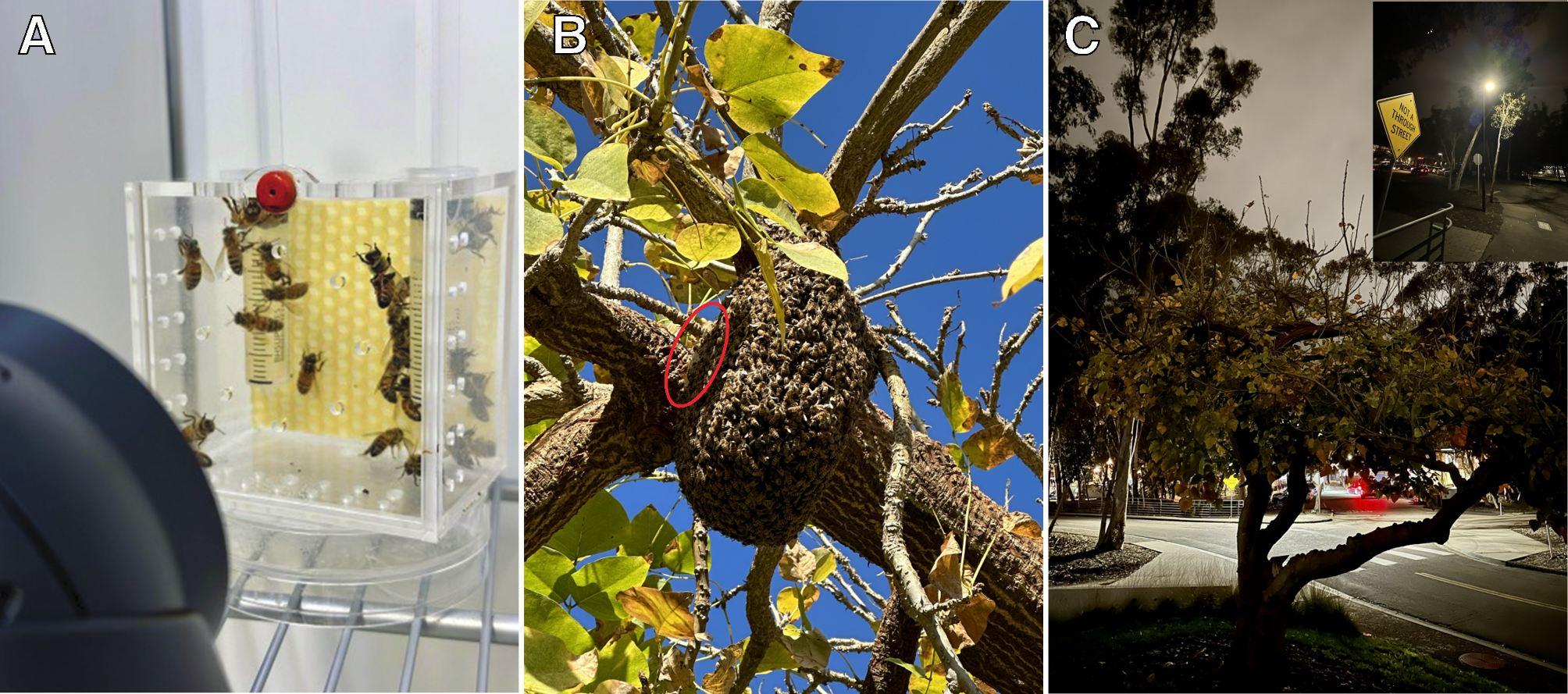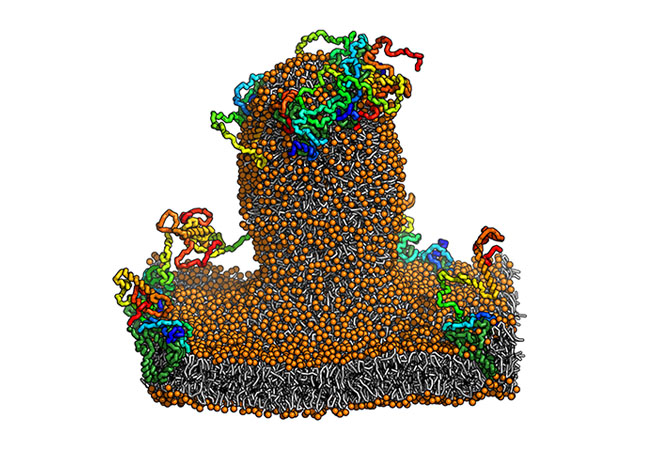2024-11-12 カリフォルニア大学サンディエゴ校(UCSD)
<関連情報>
- https://today.ucsd.edu/story/sleep-is-no-light-matter-for-bees
- https://www.nature.com/articles/s41598-024-73378-9
ミツバチが人工光にさらされ続けると、睡眠リズムが変化し、睡眠が妨げられる Exposure to constant artificial light alters honey bee sleep rhythms and disrupts sleep
Ashley Y. Kim,Aura Velazquez,Belen Saavedra,Benjamin Smarr & James C. Nieh
Scientific Reports Published:12 November 2024
DOI:https://doi.org/10.1038/s41598-024-73378-9

Abstract
Artificial light at night (ALAN) changes animal behavior in multiple invertebrates and vertebrates and can result in decreased fitness. However, ALAN effects have not been studied in European honey bees (Apis mellifera), an important pollinator in which foragers show strong circadian rhythmicity. Colonies can be exposed to ALAN in swarm clusters, when bees cluster outside the nest on hot days and evenings, and, in limited cases, when they build nests in the open. We captured and maintained foragers in incubated cages and subjected them to constant light (LL), constant dark (DD), or 12 h light:12 h dark (LD) cycle, and observed them with infrared cameras. After 79 h, there was a significant interaction of treatment and time because LL bees slept less. In detail, the bees maintained a regular sleep pattern for three days but LL bees showed a shift on the fourth day. LL bees had the largest sleep differences from LD controls, with trends of lengthened periods and increased phase misalignment from both LD and DD bees. LL bees also experienced significantly more disturbances from their nestmates and preferred to sleep in the lower portion of the cages, which had significantly lower light intensity. These findings suggest that ALAN can disrupt the sleep of honey bee foragers, which has implications for their behavior and overall colony health.


